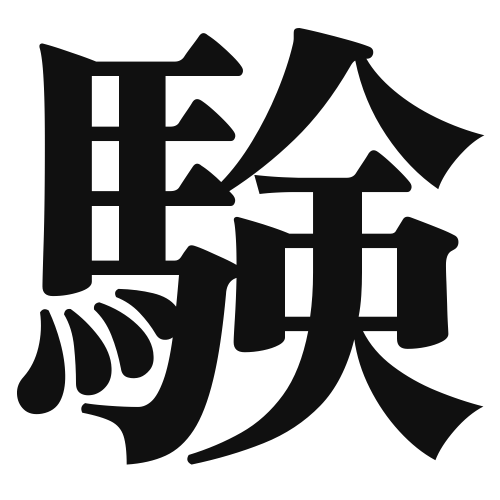1. Overview of Meaning
The kanji “験” (pronounced “ken” or “gen”) primarily means “to test” or “to verify.” It is often associated with experiences, examinations, and the results of trials.
2. Origin and Radical
Origin of the Kanji: The kanji “験” is a compound character (会意文字) that combines elements to convey its meaning. It consists of the radical “石” (stone) and the character “見” (to see), suggesting the idea of testing something by observing its results.
Radical: The radical of “験” is “石,” which relates to stones or rocks, often symbolizing something solid or substantial.
3. Examples of Usage
Common Words and Phrases: Some frequently used words that include “験” are:
- 経験 (けいけん, keiken) – experience
- 試験 (しけん, shiken) – examination
- 験証 (げんしょう, genshō) – verification
Example Sentences in Daily Conversation:
- この仕事の経験が役に立ちました。 (このしごとのけいけんがやくにたちました。) – My experience in this job was helpful.
- 試験の結果が楽しみです。 (しけんのけっかがたのしみです。) – I am looking forward to the results of the exam.
4. Synonyms and Antonyms
Similar Kanji: A kanji with a similar meaning is “証” (しょう, shō), which means “to prove” or “evidence.” While both relate to verification, “験” emphasizes the process of testing, whereas “証” focuses on the proof itself.
Opposite Kanji: An antonym is “無” (む, mu), meaning “nothing” or “absence,” which contrasts with the idea of testing or verifying something that exists.
5. Cultural and Historical Background
Relation to Japanese Culture: The concept of “験” is deeply rooted in Japanese culture, where testing and verification are essential in education and various traditional practices.
Proverbs and Idioms: One common saying is “経験は最良の教師” (けいけんはさいりょうのきょうし, keiken wa sairyō no kyōshi), which translates to “Experience is the best teacher,” highlighting the value of learning through personal experience.
